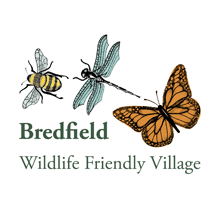British small mammals include mice, shrews and voles. Most are common enough in the wild, but we rarely get to see them; perhaps only a glimpse of a creature scurrying through the vegetation. For good reasons or not, voles are probably the most endearing of these small mammals. Even ‘Ratty’ in The Wind in the Willows was probably a Water Vole. This article focusses on voles and it introduces a vole that gained some local publicity: Victor. The images in this article come with a ‘cuteness alert’!
Identification
Let’s get the tricky question of identification out of the way first. What’s the difference between mice, shrews and voles? Ear size, tail length and fur colour are the things to look for. Mice all have conspicuous ears, relatively large eyes, and long hairless tails. Around Bredfield, if you find a mouse in your shed, it is most likely to be a Wood Mouse seeking shelter. (The Hazel Dormouse, by the way, isn’t a mouse at all. It lives mainly in trees and is becoming a very rare sight.) Shrews are smaller than mice and voles; they have a long pointed snout. and very small eyes and ears. Voles have much shorter and more rounded snouts than mice and shrews. They also tend to have smaller ears and eyes in proportion to their body size.
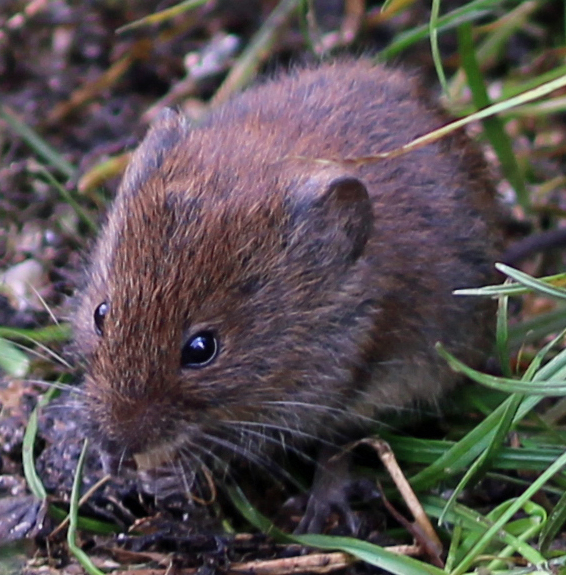
Bank Vole (Stewart Belfield) 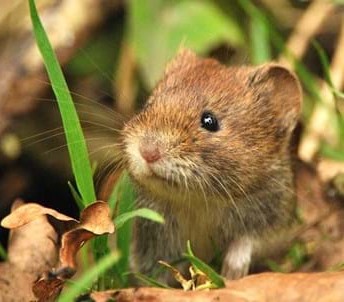
Field Vole (The Woodlands Trust)
There are three species of vole native to mainland UK: Bank Vole, Field Vole and Water Vole. Water Voles are about twice the size of the other two voles and, as the name suggests, you will only find them in or near water. Field Voles and Bank Voles are similar and easily confused. The Bank Vole is around 10cm long (excluding the tail) and has a red-brown upper-coat with a pale cream/grey underside. Its tail is about half the length of its body, and this helps distinguish it from the Field Vole, which has a proportionately shorter tail. The Field Vole (which is sometimes called ‘Short-tailed Vole’) has a coat that is yellow-brown in colour. When distinguishing the two, it might be helpful to think of the Bank Vole as having a ‘warmer’ colour, and the Field Vole as having a ‘cooler’ colour. Bank Voles are the species you are most likely to see in your garden, especially if they are raiding your bird table or hanging around under your bird feeder, waiting for falling food. Field Voles are more numerous, but you are less likely to see them amongst the long grass which they inhabit.
Victor the Vole
A recent resident of nearby Burgh gained some local fame for the story and pictures of the vole that came to inhabit her garden: Victor the Vole. It all began on the day Julie saw a vole (though initially she thought it to be a mouse) on the bird table eating an apple. She named it Victor. Voles love fruit, seeds and nuts, and Victor became a regular visitor to the bird table and surrounding garden. Julie starter a Twitter account for Victor as a way of sharing her wildlife photos to a wider audience (@victorthevole). Today, Victor’s name lives on. If you look through the pictures taken by local BBC Weather Watchers, you will find Julie’s pictures, under the nom-de-plume: ‘Victor the Vole’. Let’s have a look at Victor.
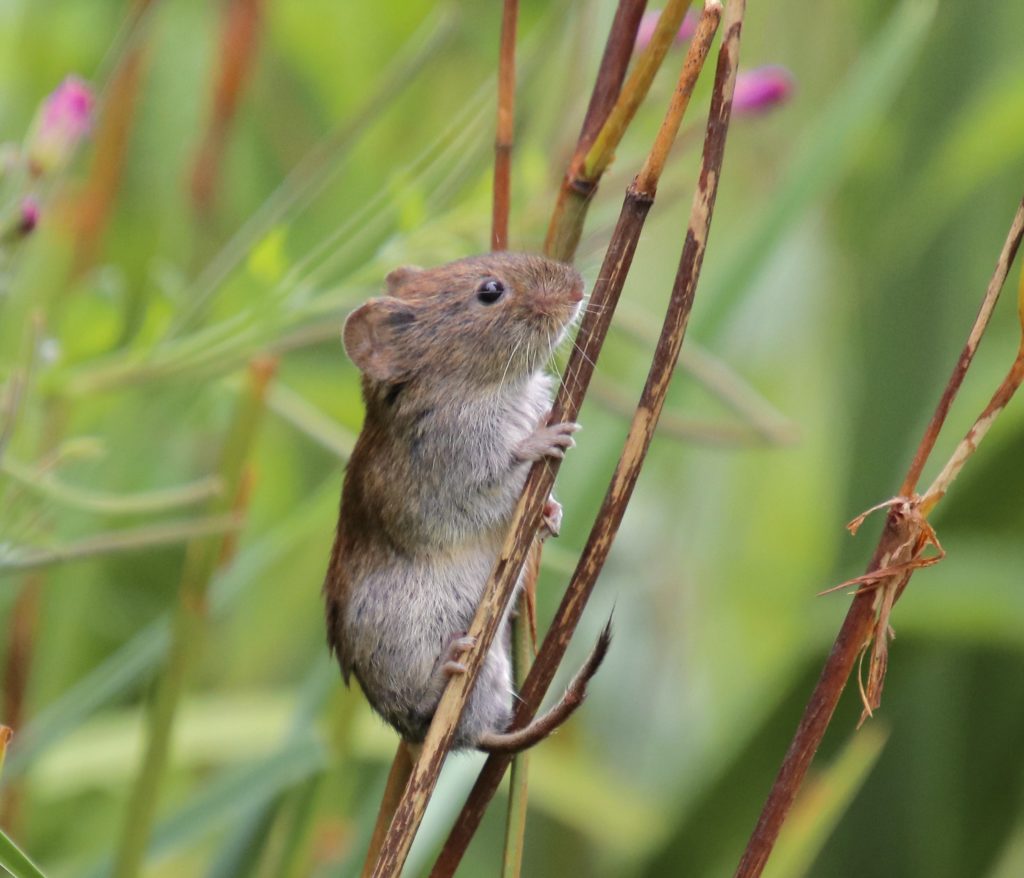
Victor climbing (Julie Kemp) 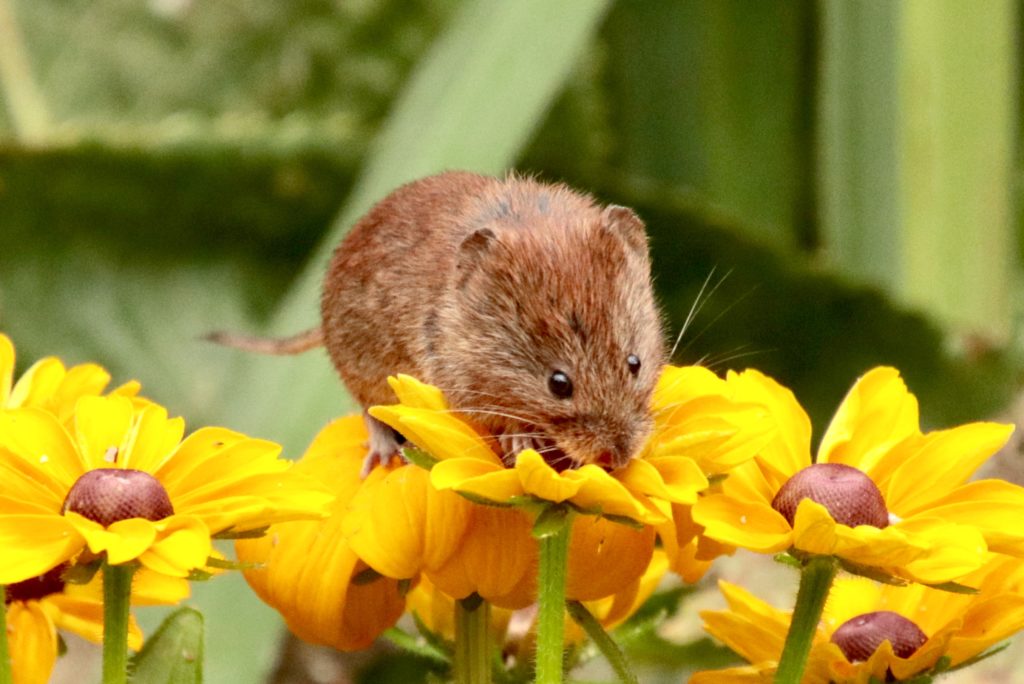
Victor on flowers (Julie Kemp)
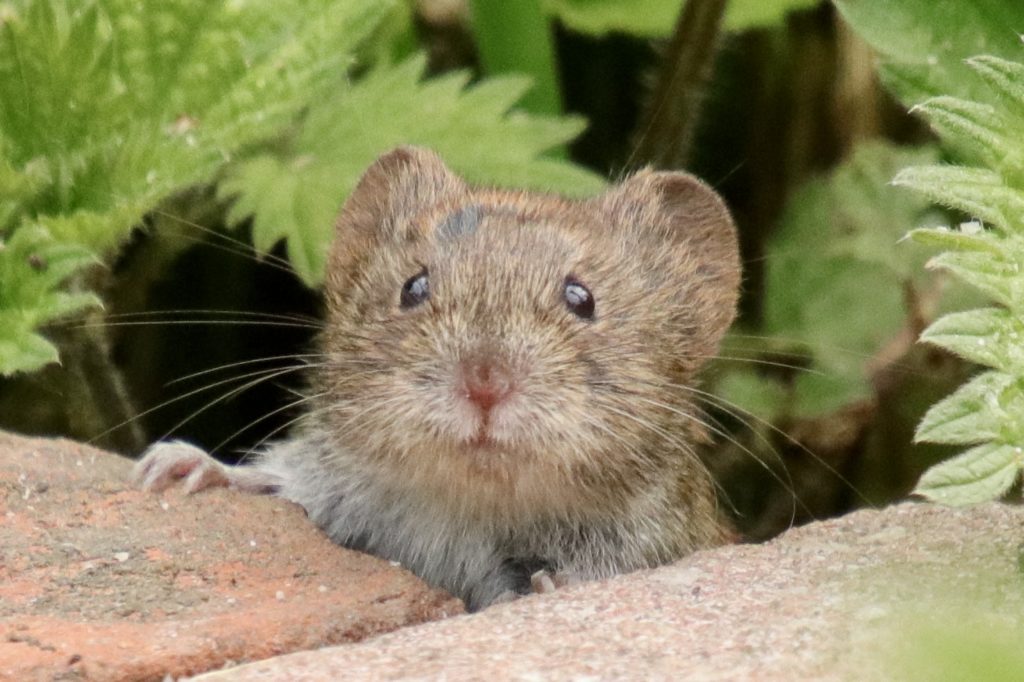
Peek-a-boo Victor (Julie Kemp) 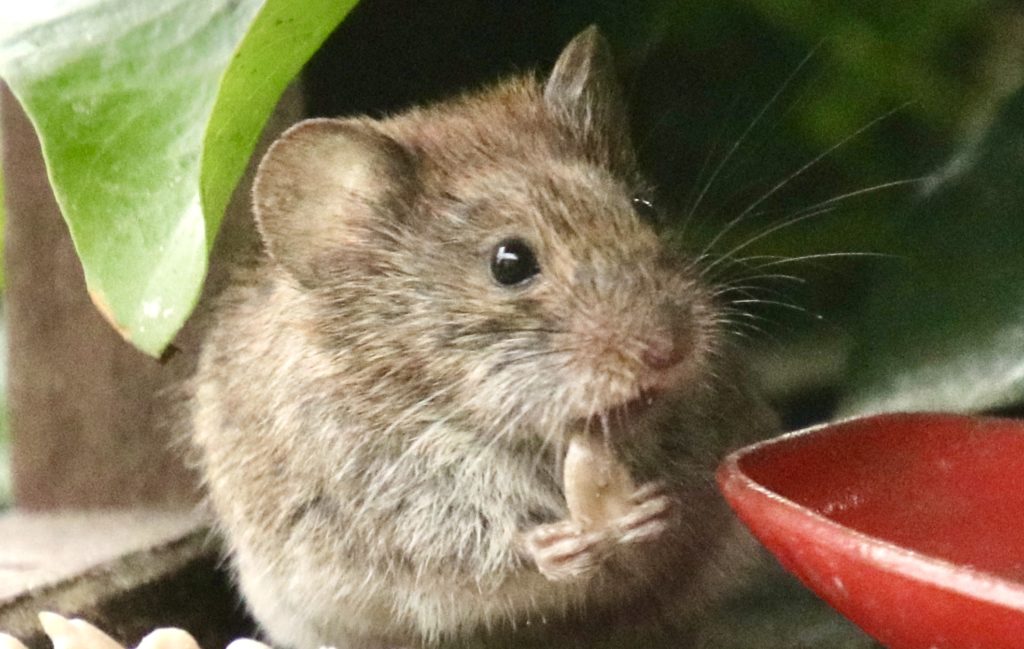
Victor enjoying a seed (Julie Kemp)
A key place in the ecosystem
Voles have a vital place in our ecosystem. They occupy a pivotal position in the food chain, consumed by owls, Kestrels, Weasels and Stoats. The abundance of these predators is linked directly to the abundance of voles and other small mammals. Vole populations have marked cycles (every four years or so for Field Voles). In the years when populations are high in number, there will be higher number of predators. Kestrels tend to fledge more young in years when voles are most numerous.
In addition to their natural cycles of proportional abundance, the general trend of populations of voles in an area will depend upon the extent and condition of their required habitat. Voles need to be in areas where there is a sufficient supply of food (seeds, shoots, fruit and occasional invertebrates) for them to consume. Set-aside fields and wild verges are great for them. (That’s why Kestrels can be seen hunting over the wilder roadside verges.) Intensely farmed arable land and closely trimmed verges are like a desert for voles. In your garden, Bank Voles will do well where there are some wilder areas, some nooks in which they can hide, and helpfully some spare bird seed.
Gardeners sometimes complain that voles nibble away at their vegetables. They may well do, but the damage is not usually great. Remember that if there is a high population of voles, it won’t be for long before numbers will fall with the next cycle. It would probably be very difficult for a gardener to make much impression on vole numbers. The Royal Horticultural Society recommends that “where possible tolerate or use barriers and contained storage to deter damage from these animals”. Of course, it should be remembered that voles will eat many of the ‘weed’ seeds that gardeners might not want in their gardens, so the voles could be doing a service.
To conclude, voles play a key ecological role and they are also a delight to watch. Look after them.
